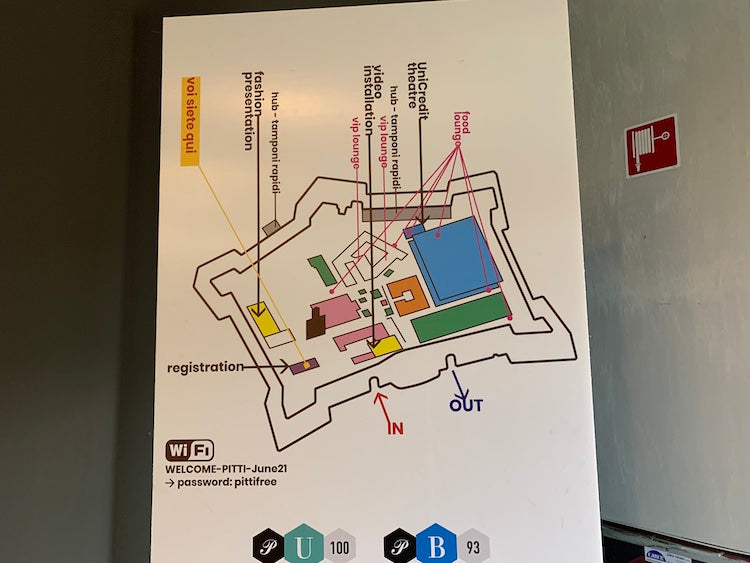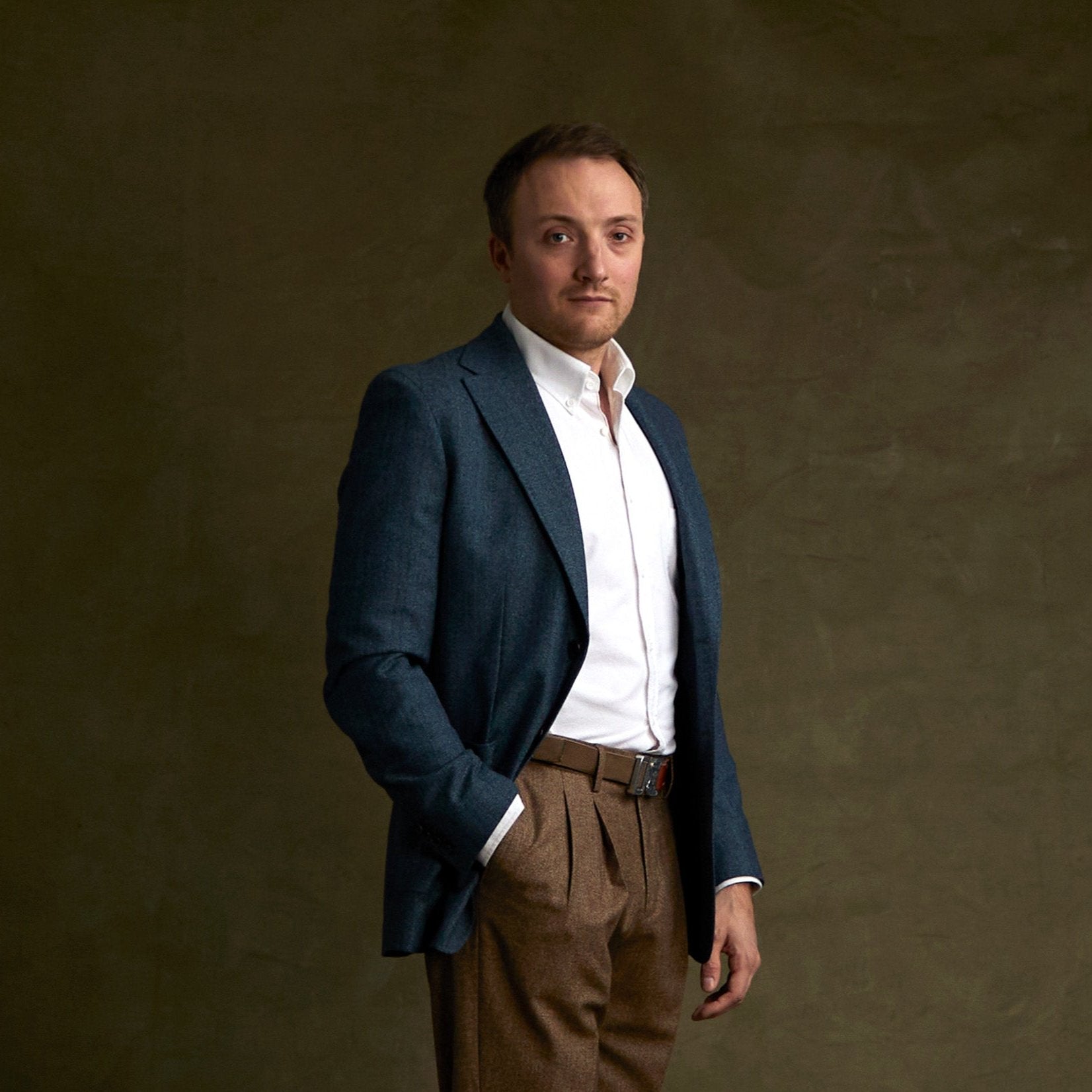As you know, I have a lot of affection for Pitti, this professional ready-to-wear trade fair which is held in Florence twice a year.
I love this creative atmosphere, the multitude of brands exhibiting their collections for professional buyers from around the world, and above all, the famous Pitti “peacocks” in exuberant costumes.
So much so that we have written a number of articles and videos on the subject.
Except that… It was before the health crisis associated with Covid-19.
Obviously, a historic show which brings together 35,000 people in four days was hit in the face, and it was shut down in 2020. More precisely, it was converted into a digital edition which, according to the brands with which I was able to discuss, did not really convince.
However, with the improvement in health conditions, Pitti has announced the big return of the “physical” show in June/July 2021, still at the Fortezza Da Basso.
And this, for the hundredth edition!
So I was very eager to attend this historic Pitti in more than one way. How was Pitti going to adapt to sanitary conditions? Who would the audience be? The brand offering? This is what we will see after a visit in the last days of June.
Important note: given that it was the summer 2022 season that was presented, photos of the clothes on the brand stands are not authorized, to avoid plagiarism, so I did not take any (And that is very frowned upon at Pitti to take photos in the wild)
A Pitti that has adapted to the context
Before entering Pitti, you must first show your credentials: a European vaccination certificate is required or a negative PCR test, for each visitor.
Entrance tickets can no longer be purchased on site, everything must be reserved online. No more badges around your neck, everything is on the phone now.
But above all, I notice a first element which says a lot about the size of this Pitti: the living room plan…
A reduced size Pitti
Usually, each visitor receives a thick booklet with the plan of each building and all the brands present.
However, this time, it is a simple leaflet which serves as a plan, because the list of brands exhibiting has been drastically shortened.
And again, this list of brands takes into account those which have a “physical” stand and those which are only visible on the Pitti website. If we only keep those who physically came to the show, the list gets shorter and shorter…
I also realize when looking at the map that most of the buildings are simply closed.
And this fear was verified as I walked around the living room: it was a very small Pitti who revealed himself to me.

I assure you, usually, the plan is much more detailed! There, only the large blue building contains most of the Pitti marks.
Whereas before there were around ten buildings where the brands exhibited, there are only two this year: mainly the Central Pavilion. And there too, it is reduced in size, since the top floor is closed.
This is also seen in the present world, the paths are much sparser than before, and the famous Pitti peacocks are very rare, and are almost absent (and I miss them!).

A Pitti which is slowly starting up again…
The brand stands are very empty, and the example of the Brunello Cucinelli stand is very telling. While it is usually always crowded, there are really not many people, despite the brand's staff being very present to welcome people.
As for the outside, on the famous square, we are a long way from the great days. Eccentric costumes are rare, and most of the usual Instagrammers are absent.

Second day of Pitti at 11am. It is on this square that all the "peacocks" are usually found, and there, you can see that we are far from the crowds of the big days.
In short, it's a Pitti restart for this 100th edition, and let's hope that buyers and brands outside Europe will be able to return from January 2022 to give more substance to this show.

This is the huge wall installed in the pavilion which formerly housed brands like Nanamica or ABCL Garments.
To attract more buyers, Pitti decided to organize at the same time the "Pitti Bimbo", a ready-to-wear show dedicated to children's fashion:

The Pitti Bimbo, also reduced in size for this year!
A very Italian Pitti
Obviously, while it is always complicated to travel for American and Asian buyers, I suspected that this Pitti was going to be European. But above all it was very Italian, with mainly Italian buyers. And especially Italian brands.

The Brunello Cucinelli stand, still in the same space, but unfortunately without buyers from all over the world.
So no more pavilion with small Japanese outdoor brands, or brands from around the world for contemporary, heritage, casual or sartorial.
And even in terms of Italian brands, many are absent, including the sartorial brands that I loved to see so much like Lardini, Luigi Bianchi Mantova, or PT-01.

Tombolini, flagship of the Italian "sarto casual" style, one of the rare brands that took the risk of renting a large stand.
The offer is therefore very limited, I estimate roughly that this year, only 10% - 20% of the brands were present.
And what about the brands present then? As I said, these are Italian microbrands, mostly reserved for the Italian market, with very colorful and fanciful pieces, not very suitable for the French market.
And in terms of supply?
This was the great unknown: what were the brands going to offer after being disrupted by the pandemic?
What interested me was to see how the costume brands had adapted.
But as I said, most of them are absent, so I will only have the beginnings of an answer. The blazer has become very rare, and when it is still there, it is very fluid, light and casual.
As for more formal suits, there were very few of them; we feel that the page has been turned on this type of product.
On the other hand, we see that the pandemic has accelerated a trend that was already very present, namely relaxed tailored pieces.
There, it's an explosion of joggers, stretch fabrics, safari jackets and other overshirts worn with hoodies.
The colors are also asserting themselves, as if the brands wanted to mark the end of a difficult period with brighter and bolder shades.
Overall, I did not find any significant changes in the offer. Some brands are timidly trying to position themselves on more CSR products, but overall, I was not disoriented, as I was expecting to see a lot more homewear.




